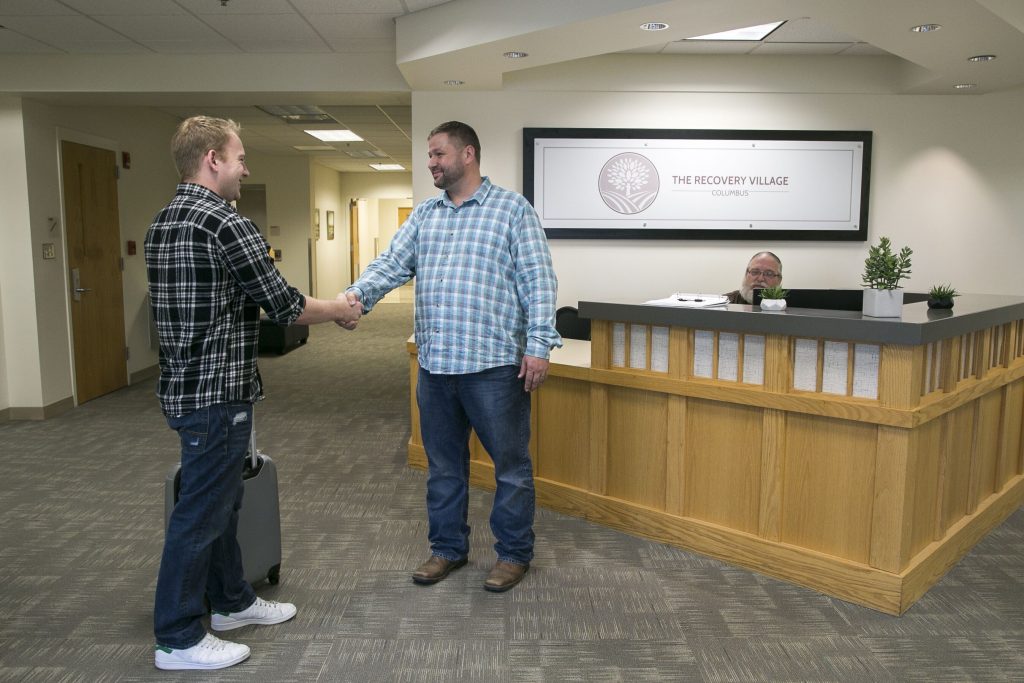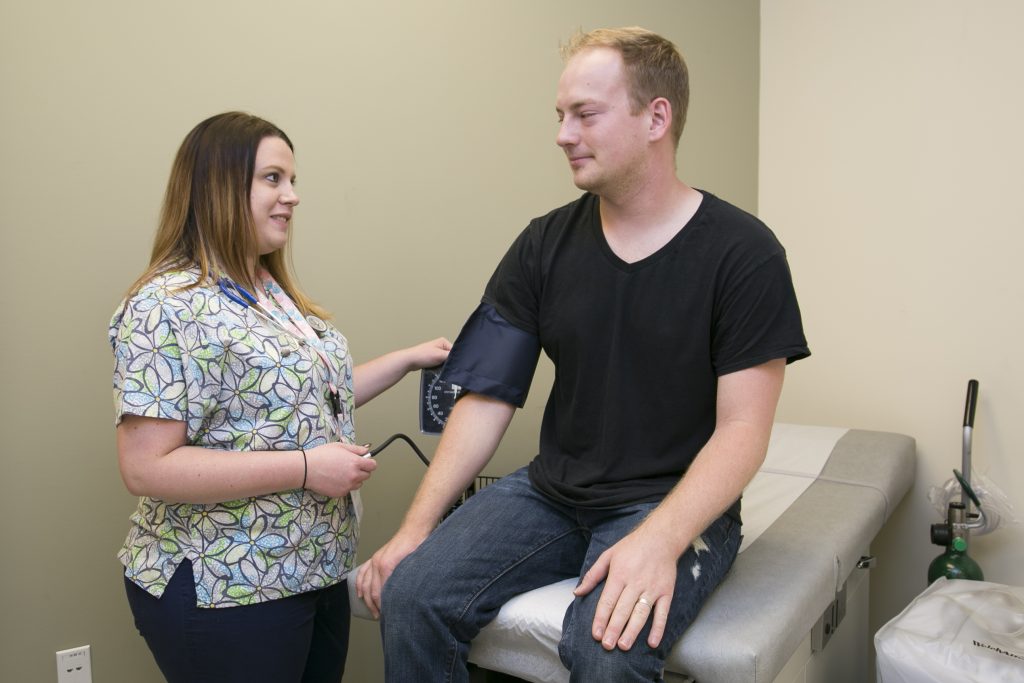The History of Alcoholics Anonymous

By The Recovery Village Columbus
Last Updated: February 17, 2023
Alcoholics Anonymous is a recovery program for people who struggle with alcohol. Anyone who wants to stop drinking is welcome to join an AA group. These groups meet around the world, they’re free, and participants can sit and listen or, if they’re comfortable, they can share their stories.
What Is Alcoholics Anonymous?
Alcoholics Anonymous is a global fellowship open to anyone. There are millions of members in more than 180 countries now. AA is based on the Twelve Steps and Twelve Traditions Book. AA is a mutual support program that’s readily available. It’s considered a community-based resource. Other self-help groups based on the 12-step philosophy include Narcotics Anonymous (NA) and Cocaine Anonymous (CA).The 12-step philosophy AA is built on refers to a certain view of the recovery process. There’s an emphasis on the acceptance of addiction as a disease. The disease can be controlled but not eliminated.
The Beginning of AA
The history of Alcoholics Anonymous started in 1934. A Wall Street professional, Bill Wilson, found chronic alcoholism was destroying his life. Even after getting treatment in Manhattan, Wilson continued to drink. By his 39th birthday, Wilson realized his situation was out of control. In 1935, Wilson met with Dr. Bob Smith, an Akron surgeon struggling with addiction. Before the meeting, Wilson and Dr. Bob had been in contact with the Oxford Group. The Oxford Group was a nonalcoholic fellowship emphasizing universal spiritual values in daily life.
Under the spiritual influence of the Oxford Group and with the help of an old friend, Wilson had gotten sober. He maintained his recovery by helping others do the same. Wilson emphasized that alcoholism was an illness of the emotions, mind and body. Eventually, by looking at their alcoholism as a disease, the founding of AA began. In 1939, after several other groups came about based on the initial concept throughout the country, the Fellowship published the basic but groundbreaking textbook, Alcoholics Anonymous.
The History of AA’s Success
The growth of AA in the United States and overseas had important milestones along the way, including:
- 1935: A person from New York (Bill Wilson) with an alcohol problem has an idea of the way to sobriety. He meets a doctor from Akron (Dr.Bob) who shares his ideas. The first meeting eventually led to the creation of the Twelve Steps.
- 1937: Bill Wilson tries to raise money for the vision he shares with Dr. Bob, but they aren’t successful. In 1937, Wilson’s brother-in-law set them up with someone connected to the philanthropy work of John D. Rockefeller. Potential backers are impressed with the work being done so far. However, during the meeting, the point is made that money could ruin the purpose of the movement, so there’s no funding.
- 1938: The Alcoholic Foundation was formally established in 1938, with Dr. Bob as a Trustee and Wilson on the advisory committee. Also, in 1938, Bill Wilson started outlining the 12 steps. Then came the birth of the AA Twelve Step program.
- 1939: Clarence S., a resident of Cleveland who attends the Oxford Group meetings in Akron, announces he and other people in Cleveland will be starting a group open to alcoholics and their families. They were going to adopt the name Alcoholics Anonymous, so in 1939, the first meeting was held in a patent lawyer’s home.
- 1940: The Fellowship opens its first headquarters in Lower Manhattan.
- 1941: The publisher of The Saturday Evening Post is interested when he hears about AA from two friends in Philadelphia. In March 1941, the magazine published an article that brought Alcoholics Anonymous into public view for the first time on a large scale.
- 1947: AA becomes self-supporting based on contributions from individual groups and income from the Big Book. Contributions were voluntary, and equal service was provided to all groups regardless of their contributions. This is still in effect today.
- 1950: Dr. Bob died of cancer, but during his time working with Bill Wilson, they’d helped change the lives of nearly 100,000 men and women and their families and loved ones by this time.
- 1952: Al-Anon was created to help the loved ones and family members of people in AA..
- 1953: Twelve Steps and Twelve Traditions is published.
- 1971: Bill Wilson dies in Miami. Groups around the world hold memorial meetings to honor him.
- 1967: Membership goes beyond one million, with 28,000 groups in 92 countries.
- 2015: AA celebrates its 80th birthday in Atlanta, Georgia.
The AA of Today
AA and 12-step programs have grown significantly since the 1930s. One key difference is that initially, AA was a group for men, but now it’s estimated around one-third of the members are female. While AA’s philosophy isn’t based on research, our understanding of alcoholism has changed through the years. We now know that it is a chronic disease, and one that can’t necessarily be “cured” but can be managed. These concepts uncovered through years of research are very much in line with the teachings of AA that have been in place since the start of the program.
Another change through the years is that the religious interpretation of the program is broader than it once was. Overall, people tend to be less religious than they were in the 1930s, which has influenced the program’s approach. The concept of a Higher Power is still important in the program, but this can be interpreted individually.
Alcohol, An All-American Assassin
People struggling with alcohol remain an ongoing public health issue decades after the birth of Alcoholics Anonymous. According to the 2019 National Survey on Drug Use and Health, 85.6% of people 18 and older said they’d had alcohol at some point in their life; 54.9% said they’d had alcohol in the past month. An estimated 14.5 million people in the 2019 survey met the criteria for an alcohol use disorder. Despite these facts, less than 10% of people with an alcohol use disorder said they’d received any treatment over the past year.
Alcohol contributes to 18.5% of emergency department visits, and an estimated 95,000 people die from causes related to alcohol each year. Alcohol is the third-leading cause of preventable death in the United States. In Ohio in 2020, the percentage of adults reporting they’d engaged in binge drinking was nearly 18%. These numbers are a stark reminder of the value AA still has in society, along with formalized addiction treatment programs.
From Mustard Seed to Shade Tree for All
Years ago in Akron, Ohio, an enlightened Mr. Bill and Dr. Bob realized how much spiritual support can grow from one alcoholic talking to another. As the two men formed the origins of today’s Alcoholics Anonymous, this conversation-based support became the transformative force of healing that defines the group to this day.
Through sharing personal experiences with alcohol addiction, AA members can be honest with themselves and truly listen to everyone’s unique testimonies. This empathy leads to profound and lasting recovery for alcoholics everywhere. Because of a man named Bill, a dedicated Dr. Bob, and an anonymous group helping others find sobriety, more stories of liberation and peace are changing the conversation on alcohol addiction. It all started in Akron.
Top Reads About Alcohol Addiction

How Long Does Alcohol Stay In your System?
The time it takes for alcohol to have an effect depends on a variety of factors and will be… Read More

Alcohol Addiction Treatment in Ohio
If you can’t seem to stop drinking, you’re not alone. Let our experts help you heal… Read More

Am I an Alcoholic?
Knowing the signs of alcohol addiction can help you identify whether you or a loved one may be at… Read More

Does Alcohol Affect the Kidneys?
Alcohol causes dehydration, which decreases blood flow to the kidneys and makes it more difficult… Read More

Understanding Alcoholism and Finding Resources for Alcohol Addiction
This resource guide is an overview of the information currently available on alcohol use and abuse… Read More
Sources
- Alcoholics Anonymous. “Twelve Steps and Twelve Traditions Books.” Accessed August 17, 2022.
- Erickson, Mandy. “Alcoholics Anonymous Most Effective Path[…]o Alcohol Abstinence.” Stanford Medicine News Center, March 11, 2020. Accessed August 17, 2022.
- Donovan, Dennis M. et al. “12-Step Interventions and Mutual Support[…]ers: An Overview.” NIH National Library of Medicine, August 26, 2013. Accessed August 17, 2022.
- Alcoholics Anonymous. “AA Timeline.” Accessed August 17, 2022.
- Alcoholics Anonymous. “The Start and Growth of AA.” Accessed August 17, 2022.
- Gross, Michael Ph.D. “Alcoholics Anonymous: Still Sober After 75 Years.” American Journal of Public Health, December 2010. Accessed August 17, 2022.
- Kelly, John F. and Hoeppner, Bettina B. “Does Alcoholics Anonymous Work Different[…]arge Clinical Sample.” NIH National Library of Medicine, November 30, 2012. Accessed August 17, 2022.
- NIH National Institute on Alcohol Abuse and Alcoholism. “Alcohol Use in the United States.” March 2022. Accessed August 17, 2022.
- America’s Health Rankings. “Annual Report: Excessive Drinking in Ohio.” 2021. Accessed August 17, 2022.
- Freedman, Samuel G. “Alcoholics Anonymous, Without the Religion.” The New York Times, February 21, 2014. Accessed August 17, 2022.
- McKay, James R. PhD. And Hiller-Sturmhofel, Susanne PhD. “Treating Alcoholism as a Chronic Disease.” Alcohol Research & Health, 2011. Accessed August 17, 2022.

Questions?
Our Recovery Advocates are ready to answer your questions about addiction treatment and help you start your recovery.


